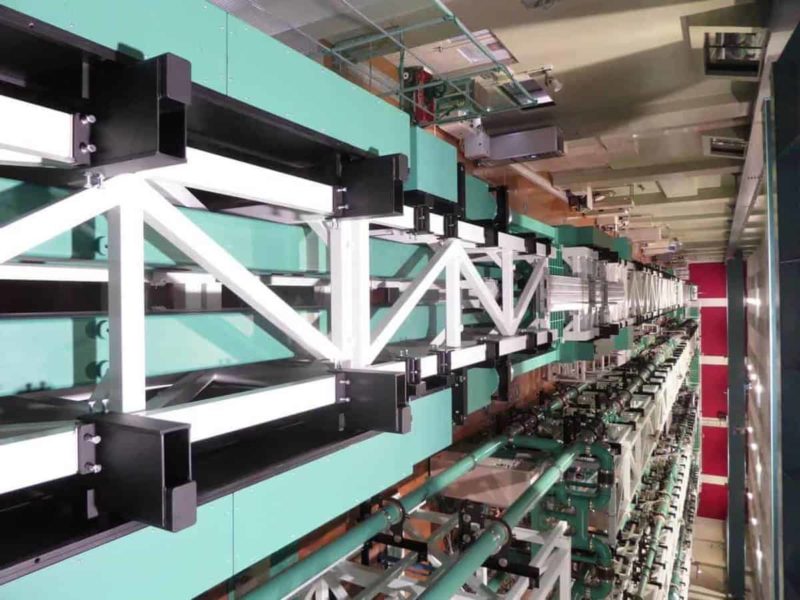The Institute of Laser Engineering (ILE), Osaka University, has succeeded to reinforce the Petawatt [3] laser “LFEX” to deliver up to 2,000 trillion watts in the duration of one trillionth of one second (this corresponds to 1000 times the integrated electric power consumed in the world). By using this high-power laser, it is now possible to generate all of the high-energy quantum beams (electrons, ions, gamma ray, neutron, positron). Owing to such quantum beams with large current, we can make a big step forward not only for creating new fundamental technologies such as medical applications and non-destructive inspection of social infrastructures to contribute to our future life of longevity, safety, and security, but also for realization of laser fusion energy triggered by fast ignition.
Background and output of research
Petawatt lasers are used for study of basic science, generating such high-energy quantum beams as neutrons and ions, but only a few facilities in the world have Petawatt laser. So far, Petawatt lasers in the world have had relatively a small output (to a few tens of joules). ILE has achieved the world’s largest laser output of dozens of times those at other world-class lasers facilities (1,000 joules or more).
This high output has been implemented by a 4-beam amplifier technology and the world’s highest performance dielectric multilayer diffraction grating of a large diameter. In addition, to bring out the performance of Petawatt laser most effectively, the first rising of the laser pulse [4] should be steep enough. For example, the laser pulse is expected to stand steep in its temporal evolution just as Tokyo Sky Tree stands high to flat, instead of the Tokyo Tower, which spreads the scaffolding to the hilly area. LFEX laser has thus first succeeded to suppress undesirable extra lights (noise), that exist in front of the main pulse, by a factor of ten order of magnitudes compared to the pulse peak (10-digit pulse contrast). The height of the noise is equivalent to the size of the influenza virus to the whole height of the Sky Tree.
Taking all the advanced high-power-laser technologies, we have completed the Petawatt laser “LFEX”, that can be now available to study basic science and practical applications even deeper than earlier.
Impact of this research (the significance of this research)
ILE has been promoting a variety of studies using high-power laser is, as a joint use and joint research center. “LFEX laser” enables us to generate high energy pulses of quantum beams with large current, and one can expect such medical applications as particle beam cancer therapy and non-destructive inspection for bridges and etc. (or defect inspection by gamma-ray beam and neutrons).
Furthermore, it is expected that the fast ignition scheme proposed by ILE, Osaka, will produce fusion energy with a relatively small laser system. The heating laser, which is indispensable for the fast ignition, can be now realized with the help of all the high-techs used for LFEX. It is thus largely expected that a break through will be made in the research of laser fusion.
If our reporting has informed or inspired you, please consider making a donation. Every contribution, no matter the size, empowers us to continue delivering accurate, engaging, and trustworthy science and medical news. Independent journalism requires time, effort, and resources—your support ensures we can keep uncovering the stories that matter most to you.
Join us in making knowledge accessible and impactful. Thank you for standing with us!


“the first rising of the laser pulse should be steep enough. For example, the laser pulse is expected to stand steep in its temporal evolution just as Tokyo Sky Tree stands high to flat, instead of the Tokyo Tower, which spreads the scaffolding to the hilly area”
What on earth does this mean?
The analogies used in this article mean nothing to me. Pitching your article with meanings only the author understands seems a poor approach.